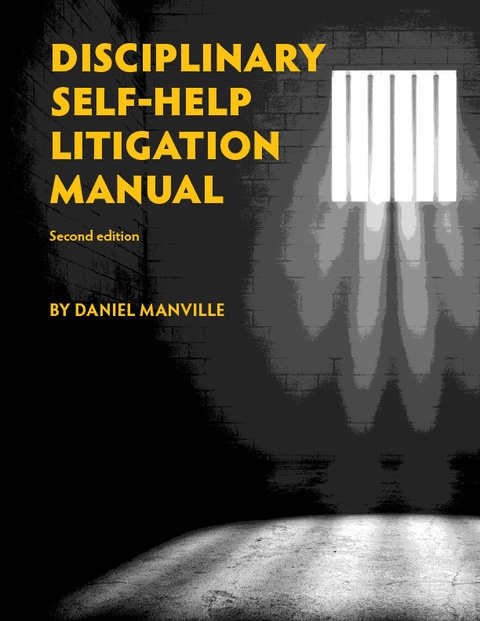Loaded on
Sept. 15, 1999
published in Prison Legal News
September, 1999, page 20
A federal district court in Rhode Island held that a private jail is neither a "law enforcement" agency, nor a federal Bureau of Prisons (BOP) facility, that would shield it from liability under federal wiretapping statutes, 18 U.S.C. §§ 2510-2520 (the Act). The court further held that factual disputes required a trial on the issue of consent to intercept.
This case involves numerous plaintiffs, consisting of attorneys, their incarcerated clients, and the prisoners' families and friends. At all relevant times (1993-94), the prisoners were confined to the Wyatt Detention Facility, which was operated by Cornell Corrections, a private corporation. During this period, the plaintiffs claim that the defendants (the corporation, its agents and employees) intercepted telephone calls from the prisoners, including confidential and privileged legal communications.
Section 2520 of the Act creates a private right of action for any person whose oral communication is intercepted in violation of the Act. As a result, the plaintiffs sued for damages under the Act, and an analogous Rhode Island statute. Both sides subsequently moved for summary judgment.
The Act provides two relevant exceptions to liability. First, § 2510(5)(a)(ii) excludes wiretaps "by an investigative or law enforcement officer in the ordinary course of his ...
Loaded on
Sept. 15, 1999
published in Prison Legal News
September, 1999, page 23
A federal district court in New York denied summuary judgment to a prison physician being sued for medical neglect. The court held that a genuine issue of material fact was in dispute in that the physician may have acted with deliberate indifference by failing to diagnose a prisoner's serious medical condition.
Samuel J. Hudak, a New York prisoner, brought an Eighth Amendment claim pursuant to 42 U.S.C. § 1983. He alleged that the attending physician at Rockland County Correctional Facility, Dr. Burton D. Miller, acted with deliberate indifference in regard to his chronic headaches. These headaches were later found to be caused by a large aneurysm
From October, 1994 through June, 1995, Hudak sought medical attention numerous tunes for chronic migraine headaches, nausea, difficulty eating and insomnia. In October, 1994, Dr. Miller noted Hudak's history of migraine headaches and prescribed Tylenol for the headaches and Benadryl for the insomnia. After Hudak make approximately 6 more visits for medical attention, Dr. Miller and Dr. Antoine agreed that Hudak did not have typical migraines and decided to conduct thorough neurological exams. Miller conducted a neurological exam of Hudak but declared his belief that Hudak was suffering from "tension headaches" and that he ...
As criminals receive longer sentences and serve a greater portion of them under threestrikes, truth-in-sentencing and mandatory minimum laws, the number of elderly prisoners with health problems has increased accordingly. Some consider this trend to be the result of a misplaced emphasis on incarceration as a solution to crime. Others view it as a profit-making opportunity. Several companies have opened a niche market of building and operating for-profit prisons specially designed to house aged and medically infirm prisoners.
In September, 1998, Alabama-based Just Care, Inc. opened the Columbia Care Center in South Carolina. Advertising the facility as "an alternative resource for medically dependent inmates," the company hopes to attract state, county and federal prisoners to fill the center's 326 beds. Six months after it opened, however, this private medical prison housed just two incarcerated patients.
The Columbia Care Center, a renovated state mental hospital, offers sub-acute, skilled, intermediate and hospice care for the ill and disabled prisoner, according to Just Care's promotional literature, and claims savings of 20-50% through reduced overhead and flat-rate (e.g. "managed care") fees. Although the center provides extensive medical services, Just Care notes that "security comes first" at the facility, which is surrounded by an electronically ...
Loaded on
Aug. 15, 1999
published in Prison Legal News
August, 1999, page 14
by Alex Friedmann
On March 1, 1999 the Corrections Corp. of America agreed to pay $1.65 million plus $803,000 in attorney fees and expenses to settle a class-action lawsuit filed by Washington, D.C. prisoners at the company's Northeast Ohio Corr. Center in Youngstown.
The suit, brought by Eugene Busey, James ...
Loaded on
Aug. 15, 1999
published in Prison Legal News
August, 1999, page 18
by Matthew Clarke
Afederal district court in Texas has ruled that prisoners who were kicked, bitten by dogs, shocked, and subjected to a public strip and body cavity search by untrained, improperly supervised private guards during a shakedown presented sufficient evidence to defeat the guards' motion for summary judgment.
Brazoria County Sheriff Joe King leased a portion of his jail to Capital Correctional Resources, Inc. (CCRI), agreeing to train CCRI personnel. At King's request, CCRI hired Ray Crawford, a former Texas prison warden, as the warden of its 512-bed wing, and two former Texas prison guards with known prior felony convictions for beating prisoners. Most of the guards Crawford hired had no prior experience and received no training.
Missouri contracted with CCRI and prisoners began arriving on September 16, 1996. They were boisterous and unruly. Crawford asked King for help. King told Crawford to tell the prisoners that if they didn't calm down they would face his "Ninja squad." Two days later, when Crawford repeated the request, King put his Emergency Response Team (ERT) and a police dog unit on standby without briefing them on the nature of their assignment. Hours later, CCRI guards smelled marijuana smoke in a pod ...
Loaded on
July 15, 1999
published in Prison Legal News
July, 1999, page 10
On January 18 and 19, 1999, Wisconsin prisoners housed at a private prison in Sayre, Oklahoma, refused to show up at the prison's chow hall for meals. John Wisener, chief of security at the North Fork Correctional Center, said that only 75-80 of the 700 prisoners attended any of the meals over the two-day period
"They have our attention," Wisener told the Post-Crescent, an Appleton, Wisconsin newspaper.
Wisener told the Post-Crescent that a survey was distributed to all of the prisoners on the second day of the protest to find out what they thought about the food. He said the prison is looking at its food operation, talking to the dietician, the district manager for the food service provider and checking the menu to determine if improvements are needed.
Loaded on
July 15, 1999
published in Prison Legal News
July, 1999, page 14
Private Prison Guard is State Actor for § 1983 Purposes
Afederal district court in New Mexico held that a guard employed by Corrections Corporation of America was a "state actor" acting under "color of state law" when he allegedly raped a woman prisoner. The court also held that the guard was not immune from suit for compensatory and punitive damages under the New Mexico Tort Claims Act because he was not a state employee; instead he was an independent contractor's employee.
Tanya Giron, a New Mexico prisoner, filed a 42 U.S.C. § 1983 suit in federal court claiming that on May 26, 1994, Danny Torrez, a guard at the New Mexico Women's Correctional Facility run by CCA, entered her cell and forcibly raped her. The court stated that Torrez acted under "color of state law" because he was performing job functions normally attributed to state authority, i.e. the strictly governmental authority to incarcerate people. Torrez also used his position as a guard to gain access to the prisoner's cell. That he then forced the prisoner to have sex with him was a definite misuse of state authority and was attributable to the State. The court further went on to rule ...
Loaded on
July 15, 1999
published in Prison Legal News
July, 1999, page 17
Afederal district court in Maine held that a former pretrial detainee had stated a claim when a jail's medical contractor denied him his HIV medication for three days.
David McNally was arrested and booked into the Cumberland County jail in Maine. During the booking process McNally told jail staff he was HIV positive and on a strict regimen of medication. The jail had contracted with Prison Health Services, Inc., (PHS) to provide medical care to jail prisoners. McNally told the PHS physician of his medical needs and McNally's personal doctor called the jail and confirmed McNally's prescription and dosages. PHS denied the medication request. McNally spent three days in the jail without his medication before bailing out. He was then hospitalized for several days as a result of the interruption of his medication, which was compounded by a beating by police.
McNally sued PHS and Cumberland jail officials claiming they violated his constitutional right to adequate medical care and the Americans with Disabilities Act (ADA), 42 U.S.C. § 12131. PHS filed a motion to dismiss, claiming McNally's complaint did not show, as a matter of law, that PHS was deliberately indifferent to his medical needs. The court denied the motion. ...
Loaded on
June 15, 1999
published in Prison Legal News
June, 1999, page 6
On October 12, 1998, four prisoners escaped from the Corrections Corporation of America (CCA) South Central Correctional Center in Wayne County, Tennessee [See: News In Brief, Feb. '99 PLN ]All of the escapees were eventually captured.
On January 15, 1992, CCA warden Kevin Myers appeared before the Tennessee state legislative Select Oversight Committee on Corrections to explain the escape. The committee was told the breakout resulted from a failure by South Central guards to follow proper procedures, and that a supervisor had been fired and two other employees suspended as a result of an investigation.
Myers cited two major procedural shortfalls. First, a supervisor delivered a mailed package (which contained bolt cutters) to a prisoner. The bolt cutters were later used by the escapees to cut through perimeter fences.
The second procedural failure occurred when a guard in the prison's control room shut off an alarm without checking to see what had caused it. The escape occurred during shift change. Myers blamed complacency and lack of attention to detail as a contributing factor to the escape. He also confirmed reports that CCA guards did not learn of the mid-afternoon breakout until they were later informed by a prisoner.
"Had I ...
Loaded on
June 15, 1999
published in Prison Legal News
June, 1999, page 10
Amajor prisoner uprising rolled through a for-profit prison at Olney Springs, Colorado, for six hours, causing extensive damage. State prison SWAT teams were called in from as far as 200 miles away to regain control of the prison.
The incident took place Friday, March 5, 1999, and was the second serious disturbance to occur at the prison, known as the Crowley County Correctional Facility, since it opened in October, 1998. The prison is operated by Correctional Services Corporation (CSC), based in Sarassota, Florida, which has contracts to operate 36 other local, state and federal lock-ups holding 9,910 prisoners in the U.S. and Puerto Rico.
Two days earlier, about 250 Washington state prisoners were shackled and hauled by bus and plane to the Crowley County prison, about 35 miles east of Pueblo, Colorado. Washington Governor Gary Locke approved the out-of-state rent-a-cell plan, calling it an appropriate emergency solution to Washington's overcrowding problem.
The disturbance was sparked at about 1 p.m. in the dining hall, said Richard Marr, deputy warden of the 1,200-bed prison. Marr claimed a Washington prisoner argued with food service staff because he wasn't served a non-meat religious diet. Marr told media the prisoner hit the food service manager ...

